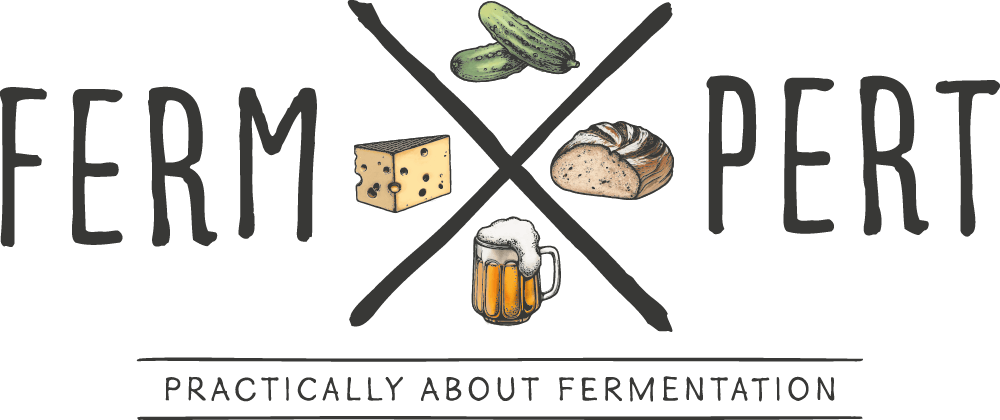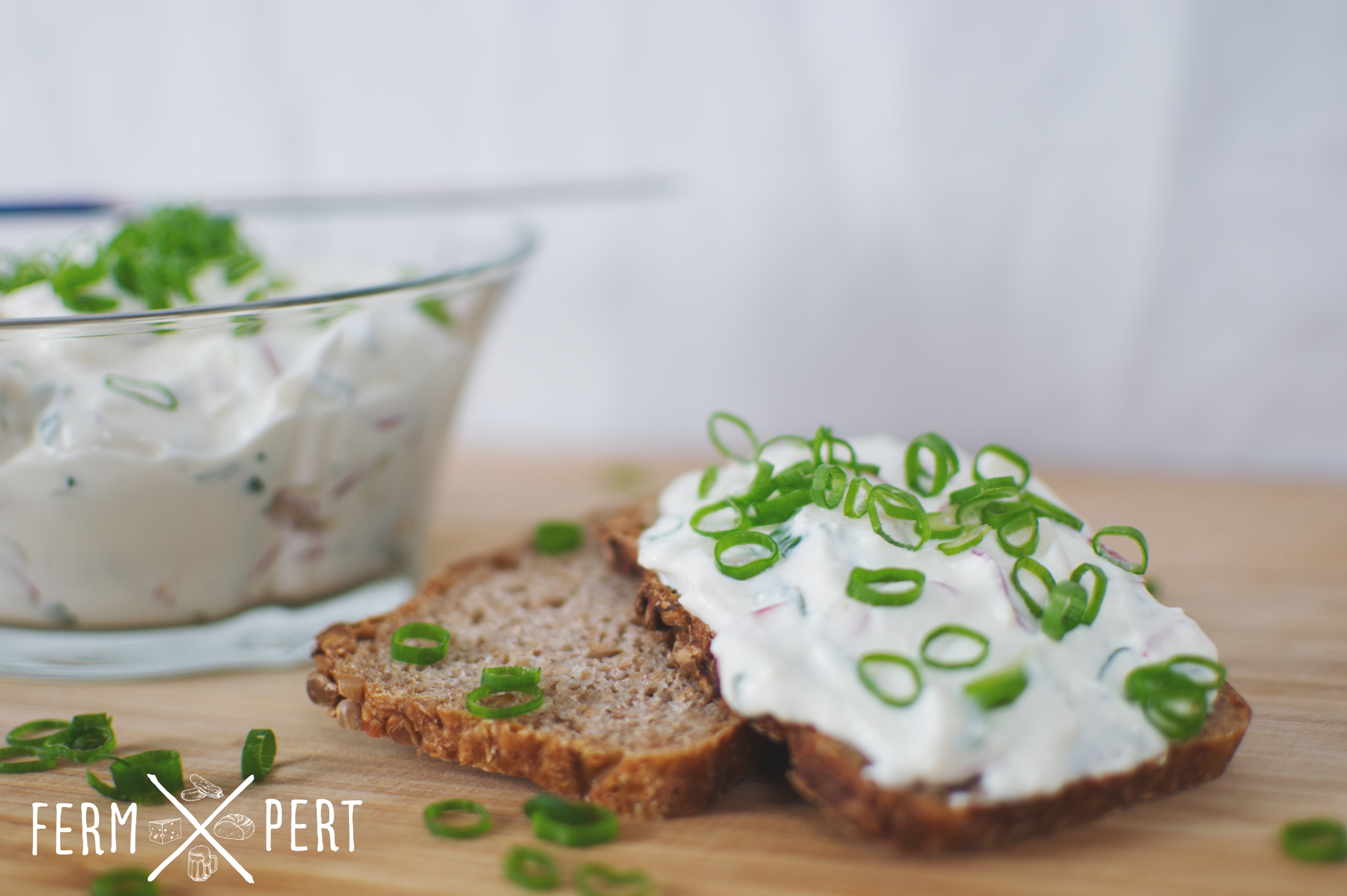Gzik is a delicious mix of quark and soured cream, seasoned with salt, with additions in the form of vegetables. Its place of origin is the Greater Poland region, but it’s consumed across Poland. It’s also the protagonist of many a culinary childhood memory of mine.
Recipe
- 250 g / 1 pound full fat quark
- 2-8 tbsp soured cream (depending on personal preferences and expectations regarding gzik consistency)
- salt to taste
- half a bunch of spring onions
- 3 radishes
Grind the quark in a meat grinder (optionally). Add soured cream and mix with the quark using a fork. Add salt to taste. The consistency should be creamy, but thick enough to serve as a sandwich spread.
Slice the radishes thinly. Chop the spring onions. Mix with the quark and cream.
Serve with bread or as an addition to boiled potatoes with skin on (this dish is called pyry z gzikiem, or potatoes with gzik).
Additional Information
Gzik is a dish typical to the Polish region of Greater Poland, but also common in Kuyavia. Although the Greater Polish variety is very similar to the Kuyavian one, they are treated as distinct dishes. The Greater Polish gzik was added to the list of traditional Polish products in the year 2007, while the Kuyavian one made it to the list in 2013.
The ingredients listed in the recipe aren’t mandatory and all can be swapped with more or less freedom, according to their availability and personal preferences.
The quark doesn’t really need to be full fat; one made from skim milk is also acceptable. Cream cheese yields a distinctively different, yet interesting result.
Soured cream can be substituted for other products. Traditionally, soured milk is a common replacement, but fresh milk is also a possibility, with the caveat that it has a major influence on the flavour. Yoghurt is another option. I’ve never tried using buttermilk or kefir, but theoretically, such a combination should also work. A friend of mine, a native of Poznań, adds serek homogenizowany, which is a variety of fromage blanc, but sweetened. Some recipes for the Kuyavian variety of gzik also mention plain water as a possible replacement.
Many recipes suggest seasoning the gzik with not just salt, but also black pepper, and sometime even sugar. Indeed, I also recall my mum serving a sweet version of gzik every now and then.
Vegetables are technically optional, but spring onions or chives, as well as radishes, can be found in the majority of recipes I’ve come across. A frequent alternative to the spring onions is yellow onion. Some recipes also mention the possibility of using dill or garlic. While not a vegetable, I’ve also come across a mention of the use of eggs in gzik, presumably in the hard boiled form. While I haven’t tried this out, I can attest that the combination of hard boiled eggs and quark or cream cheese is indeed delicious; I make a mouth watering egg spread with them.
Video Transcription
Even though gzik comes from a region no one in my family is from, I’ve been eating it since early childhood. My mum would use it as a spread for delicious sandwiches. This is exactly what I’m preparing today. The full recipe, along with additional information and alternative ingredients, can be found on the blog.
Gzik is essentially quark mixed with soured cream and seasoned with salt. I will be using two additional ingredients, probably the most common ones: spring onions and radishes.
I begin by placing my homemade quark in a bowl. Traditionally, it should be made very smooth by grinding it in a meat grinder. I omit this step because my quark is relatively smooth to begin with. Also, I don’t really mind a slightly grainy structure.
I then add some soured cream. I’m using a light cream, with only 12% fat content, but 18% or even slightly above 20% works fine as well.
Since I don’t exactly know how much cream I’m going to need, I eyeball an initial amount. I can always add more.
Next comes the salt. I like my gzik rather salty, so I use quite a lot. However, when preparing the dish for my family, I tend to cut down on the salt. This is entirely to taste, so I will be adding more later.
I combine the ingredients using a fork. It takes a minute or two. Then I’m able to assess the consistency. Mine is perfect to work as a sandwich spread, so I don’t need more soured cream.
I have a taste to check for saltiness and sure enough, I add some more. I mix the salt in.
I taste my gzik again and there’s sufficient salt, so I can move on to preparing the vegetables.
First come the radishes. When I’m feeling lazy, I just grate them, but today I’m slicing them with a knife. I cut off the root and the leaves, then cut the radish in half. I slice each half as thinly as I can. Sometimes, when the radishes are large, I chop them instead. Large slices make the gzik more difficult to spread over a slice of bread.
I move on to slicing the spring onions. I cut off the dried out tips if necessary. Then, I slice the onions thinly and toss them in the bowl with the remaining ingredients.
Finally, it’s time to give everything one last mix to evenly distribute the vegetables.
This is what the finished gzik looks like. All I need to do now is put it on some bread!
I’m using some homemade wholemeal rye sourdough bread, though white bread would have worked fine as well. I like to put a thick layer of gzik on my bread slices.
Time for a taste. It’s notably salty, but with a delicious sour background. The consistency is creamy, but with a wonderful crunch from the vegetables. Simply irresistible!

